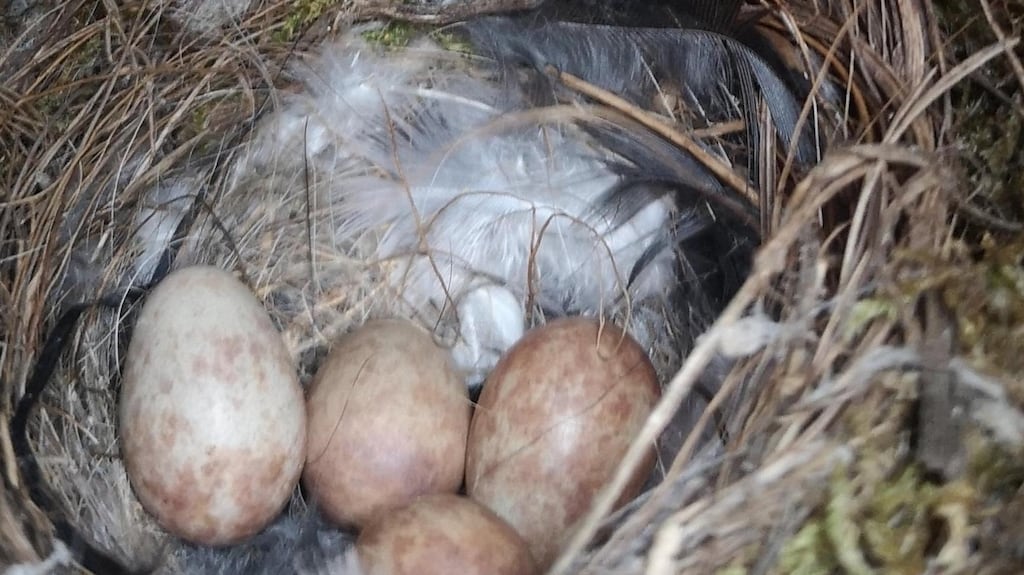The cuckoo comes in April and sings his song in May, in the middle of June he changes his tune and in July he flies away. So the traditional song goes.
But according to a growing body of anecdotal evidence, the common cuckoo, Cuculus canorus, much heard and rarely seen, is not so common any more. And he is not being heard where he used to call.
This year the bird associated with timekeeping has arrived in numbers some places, is scarce in others, has been tardy yet right on time too.
He was very early in Leitrim and numerous, but was late arriving in east Galway, but in northeast Galway the cuckoo was “like clockwork”. In parts of north Cork and alongside the Killarney National Park, he did not arrive at all, according to posts on Ireland’s Wild Birds and Animals social media site.
READ MORE
“Cuckoos have been in significant decline across Ireland for many years now, and are absent from many areas where they would once have been quite common,” Niall Hatch of BirdWatch Ireland says.
The Burren, the Aran Islands and Connemara are the best places to hear them, Hatch says.
Data for this year’s distribution is not to hand until the end of the breeding season.
There is no comprehensive data on the Irish cuckoo, apart from relying on voluntary reports, Padraic Fogarty of the Irish Wildlife Trust says.
The cuckoo is not on the red list of endangered species.
The cuckoo’s exact migration routes are not understood. They may travel up by Spain and go down by central Europe and Italy.
Crossing the English Channel on the 10,000km journey, from sub-Saharan Africa, the cuckoo divides left and right, is how ornithologist Ed Carty puts it.
Those favouring the nests of reed warblers will swipe right to England; those favouring the nests of the meadow pipit swipe left, to Ireland.
And there’s the rub. The meadow pipit, “giolla na cuaiche”, or servant of the cuckoo – also called its wet nurse “banaltra na cuaiche” – is where the female cuckoo lays its eggs. However, the meadow pipit here is on the red list of endangered species and is declining rapidly.
The pipit’s habitat – rough grass, heaths and bogs – are being drained and, in some cases, burned, and the foods the pipit eats, such as crane flies and spiders, are diminishing too.
“There has been a 21 per cent decline since 1998 in Ireland in the meadow pipit,” the National Parks and Wildlife Service estimates.
Field ornithologist with MKO, planning and environmental consultants, Carty, a lifelong bird watcher, subscribes to the theory that if cuckoos are down in one area, they may be up in another.
The cuckoo differs from other summer migrants, Carty explains.
“They are not like the swift or the swallow who will come to the same spot in the barn. They do not necessarily return to the same place. They will come to the same general area, not the same nest or exact spot,” he says.
Partly, this is to minimise risk – they will move around in search for foster parents. The cuckoo does not build a nest or rear its own young and its young never meet the parents, so lack of loyalty to place may not be surprising.
Bird migration patterns may well be changing in response to climate change. Drought in Europe earlier this year brought “an exceptional run” of alpine swifts in late March, Carty notes.
In the UK, where there is strong data, there has been an “alarming” decline in cuckoo numbers, according to the Royal Society for the Protection of Birds (RSPB).
The cuckoo’s distribution has changed also. Cuckoo numbers are down by 70 per cent in England since 1995. Yet they are up by 54 per cent in Scotland between 1995 and 2018.
Research is showing that the loss of hedgerows and the widespread use of insecticides could be affecting cuckoos’ main food source, which includes caterpillars, the RSPB believe.
It is working on the ground to restore the vital habitats cuckoos depend upon for food. “We don’t want the call of a cuckoo to be restricted to clocks in the future. We want to hear that rousing spring sound ringing out from our fields and hedges for generations to come,” the RSPB says.
One outstanding feature of the cuckoo has in fact been his clockwork regularity. The Killarney National Park is a stronghold of the meadow pipit. This brings the cuckoo to that part of Killarney. However, in the Mangerton area on the edge of the national park, where it has been recorded close to four decades – often arriving on the same date, April 21st – this year saw what amounted to a mere fly past, a whole month after its usual arrival.
A “controlled burn” by hill farmers in late February, which got out of control and burnt some of the park’s woodland, is also likely to have wiped out the nesting ground of the meadow pipit, it is thought.
The cuckoo, though heartless and cunning – the female will change shape and pretend to be a sparrow hawk to frighten the small pipit out of her nest – is still one of the great joys of approaching summer. They have long been a barometer of not just climate and its change but weather itself.
The cold snap in April arriving with the cuckoo is called “Scairbhín na Gcuach”, while if the leaves are not on the trees when he arrives, growth will be poor and late, according to tradition.
Four Irish cuckoos have been included for the first time in a tagging scheme by the BTO, the British Trust for Ornithology in a project in conjunction with the National Parks and Wildlife Service here to unravel the mysteries of cuckoo migration.












